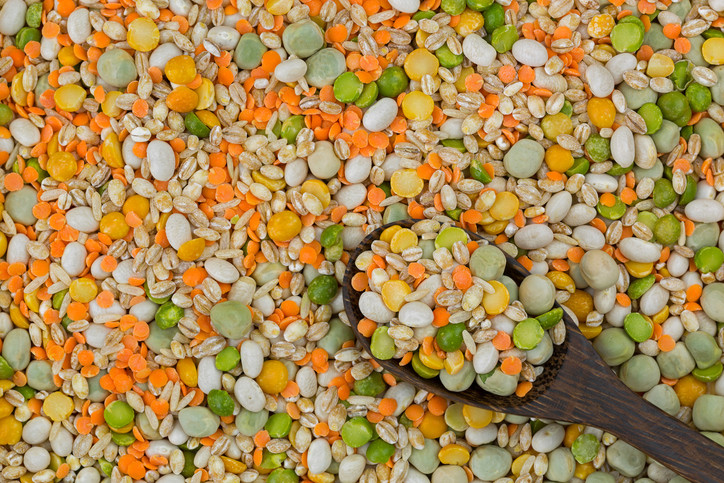A practice of health and hygiene for millennia, the fast is a sort of ‘rebooting’ of the body. Since the beginning of time and throughout the world, it has been used for therapeutic ends, or as a step on a spiritual path in order to cleanse the body and give it a new regenerative boost. This fundamental health method has always defied time, technical revolutions and even civilisations. Associated with plants, the fast only takes on more weight…
The more that ‘health’ is presented as a mixture of techniques, of miracle products or of ephemeral discoveries each promising more than the others, the more one wants to get back to the true values.
The fast is one of these values because, even if many practitioners of alternative medicine now recommend it, it is not a fashion, unless it is a fashion that has continued for three thousand years! This is because the wisdom of the ancients allowed them to observe that the digestion (stocking, digestion, visceral peristalsis, conversion, and stocking) is a phenomenon that generates a great expenditure of energy in our organisms which, in case of illness, it is important to economise.
Let’s add that the fast is not an exclusively human practice. It is very common in the animal world and is often connected in particular to a vital period in the animal’s life, such as during the seasons of rutting, hibernation, and migration or even in the larval, embryonic stage. From the Alaskan seal, who refrains from all meals during the two months of the mating season, to the salmon who transforms itself by fasting on its journey to the spawning grounds; then there is the tadpole who fasts during the fifteen days of its metamorphosis into a frog, or again the wild goose which swallows nothing during its migratory journey…numerous species naturally grant themselves a fast whose happy psychological consequences are at the base of their survival.
Eating without stopping: illogical.
It is only today, in our modern society which believes in explaining everything by rationality, even when its experiences and foundations are regularly questioned, that the fast is pointed at as an old-fashioned ‘technique,’ useless and especially dangerous, putting a suffering organism in opposition to that which it is programmed to do: eat. ‘Get strength’ to fight against the illness is the dogma today, even if the lack of appetite is made clear by the natural language of the body.
If one wants to step back and look at the big picture, one is obliged to note that, in all the natural sciences, from the molecule and the cell to the planetary level and even the universe, the notion of rhythm is omnipotent: the reproduction of the cell (mitosis…meiosis), the heart’s rhythm (I pulse… I rest), the Circadian rhythm of day and night (activity…sleep), the growth in the springtime, and the harvest in autumn are just the most striking examples.
We fast every day without knowing it.
The daily diet also follows this rule. It is necessary to eat to live, but it is also necessary sometimes to refrain from eating. Is it not this rhythm, greatly shortened by our modern way of living, which we observe without knowing it, every day at breakfast: is not the ‘break-fast’ a rupture of the fasting process begun by the body during the night?
Obviously, we are not going to be able to display in these few pages what has taken the worlds greatest specialist on fasting, Dr. Shelton, an entire life of study and observation and finally a comprehensive book (a veritable encyclopaedia on the subject) to expound. He described all the different types of fasts, their benefits and his observations or the observations of the fasters themselves. If long fasts of 10 days demand medical supervision, this practice over a short period of 5 days, 3 days or even 36 hours is much easier than it would seem at first.
The 36 hour short fast.
The fast is a very logical phenomenon, giving the activity of the digestive system a rest, with all the advantages and benefits that result from this. On a calorie plan, the connection between the number of calories spent in the process of digesting and those actually obtained through the digestion of the food is very weak. So, for a great number of foods, it is necessary to spend 95 calories to obtain 100! During this time, the body acidifies its intestinal lining, generating by-products of digestion which are considered toxins and which delay the surveillance of the immune system in proportion to the importance of the food to be digested. A well conducted fast will allow us first off to ‘de-acidify’ the terrain, to clean the intestinal lining, and to give the digestive organs and the process of intestinal assimilation a rest. In punctually stopping the activity of the enzymes and in temporarily suspending the reaction of numerous chains of the metabolism, the system can repair a multitude of mechanisms in disequilibrium with greater ease and restore coherence with even more vitality, since the fast was well lived.
Then the reintroduction of food must pass through a period of surveillance of the nutritional quality with the purpose of bringing the body what it waits for expectantly: the trace elements and the vitamins in a good combination which constitutes a healthy and living diet (raw foods, germinated seeds, yeast, enzymes…)
A stepping stone to the medicine of plants
The therapy of plants, first order compliment to promoting natural health will then be totally included and accepted. This therapy will integrate itself into the reviving metabolisms, receivers of new information which will help the body to form new logical processes. Let us take the example of a 20 or 30 year old person who has trouble gaining weight despite an important daily alimentary ration. Chronic digestive problems, alternating between constipation and diarrhoea and a nervous temperament reinforce this metabolic disequilibrium. A well followed fast could make this fragile person lose a few grams more. But when they resume eating, they have a better assimilation of nutrients, which is brought about by giving the digestion a rest. This person will then see their weight increase slightly and at the same time they will optimise their ability to metabolize magnesium, which is very important for their nervous temperament. The rest period and the water absorbed during this period will also promote the elimination of certain acids like the pyruvic acid, which is responsible for their stress.
Most programs of plant therapy see their effects increased if the fast is integrated as a tool of health and care. Whether it is an action directed at aiding sleeping problems, or with the goal of purifying or slimming, or against an infectious or virile pathology, the fast will increase the potential action of plants, essentially by returning to the body a better intrinsic vitality. The most typical example is certainly that of sexual activity. After this fasting period, the body feels an important balance and, more than just being generally in better shape, with an indisputable clarity of spirit, the tonus and libido are strengthened, even though this step is contrary to the logic of taking stimulants.
How to fast.
The most important thing is to be conscious of the fears connected with food and diet: “If I don’t eat, I run the risk of…dying!” It is imperative that this unconscious fear, well anchored in our beings, be lifted before beginning anything. If it isn’t, the body, blocked by the intellect, will not be able to implement the cleaning process which should take place. How to get over this fear? The answer is simple and demands just that we observe how our bodies function: if, in the morning, we ‘break-fast,’ it is because the body greatly benefited from the period of fast which preceded. It is advisable, then, to simply continue the night-time fast. I often recommend choosing a day of the week for fasting: Tuesday, Friday or Sunday, which ever day works best for you. For example: on Tuesday, we are going to stretch out the night-time fast from Tuesday through Wednesday.
So, during a variable period of a few weeks, every Tuesday evening, you are going to decrease and then cease to eat your dinner. You will certainly need to take care to drink water in proportion to your needs.
The point being that the night-time fast will have started earlier in the day: in fact immediately after the lunch-time digestive phase finishes.
Before being able to fast for an entire day, we will gradually extend this period towards lunch, and finally towards breakfast on Tuesday morning. Naturally, “to make reserves” would go against our logic which looks for a lighter and lighter digestion so that other processes can get under way as soon as possible. This bad reflex would only draw out the digestion period of the aforementioned meal, to the detriment of the resting period to follow.
Many people, during the preparatory phase before fasting for a day wish, at least, for something which can help them to get over the fear of “having nothing to eat.”
A mix of plants taken by infusion and drunken throughout the day consecrated to the fast will help not only the person to surmount their fear, but will also help the body in its hunt for the toxins. Astralagus (sarcocolla, tragacanth) for the immunity and for dealing with the sensation of coldness, bilberry leaves for the pancreas, milk thistle, sweet woodruff and marjoram to aide the efforts of the liver. This little assortment, combined with rhodiola (golden root), kudzu and griffonia in the form of gel capsules to avoid punctual reactions of hunger and to optimise the general drainage.
Conceived at first for a 36 hour fast, as in our example of the whole day of Tuesday in addition to the preceding and following nights, this logic can then be adapted in the same way to a three day fast.
I have been able to hear a great number of testimonies of the benefits of fasting, beginning with the sensations of internal peace, serenity and happiness, after passing the stage of fear. Often one reports the improvement of sleep and better shape during the day. Rheumatic pains, especially those connected which inflammations of the joints are diminished. A number of women noticed improvements with hormonal troubles, notably menstrual pains.
Finally, and this is where I think the benefits are the most pleasant, facing an infectious illness when we would like to feed the body to make it stronger so that it can defend itself, fasting makes the difference in the fight against the microbe. Pharyngitis, tonsillitis, rhinitis or viral diseases such as the flu or the chicken pox for adults are mastered in a shorter time than one is accustomed to. One could begin to think that fasting could even stop the biological clock.
Address:
French Institute of Applied Phytotherapy
I.F.P.A
BP 142
09004 Foix Cedex
Telephone: 05 61 69 77 77
En aucun cas les informations et conseils proposés sur le site Soignez-vous ! ne sont susceptibles de se substituer à une consultation ou un diagnostic formulé par un médecin ou un professionnel de santé, seuls en mesure d’évaluer adéquatement votre état de santé


